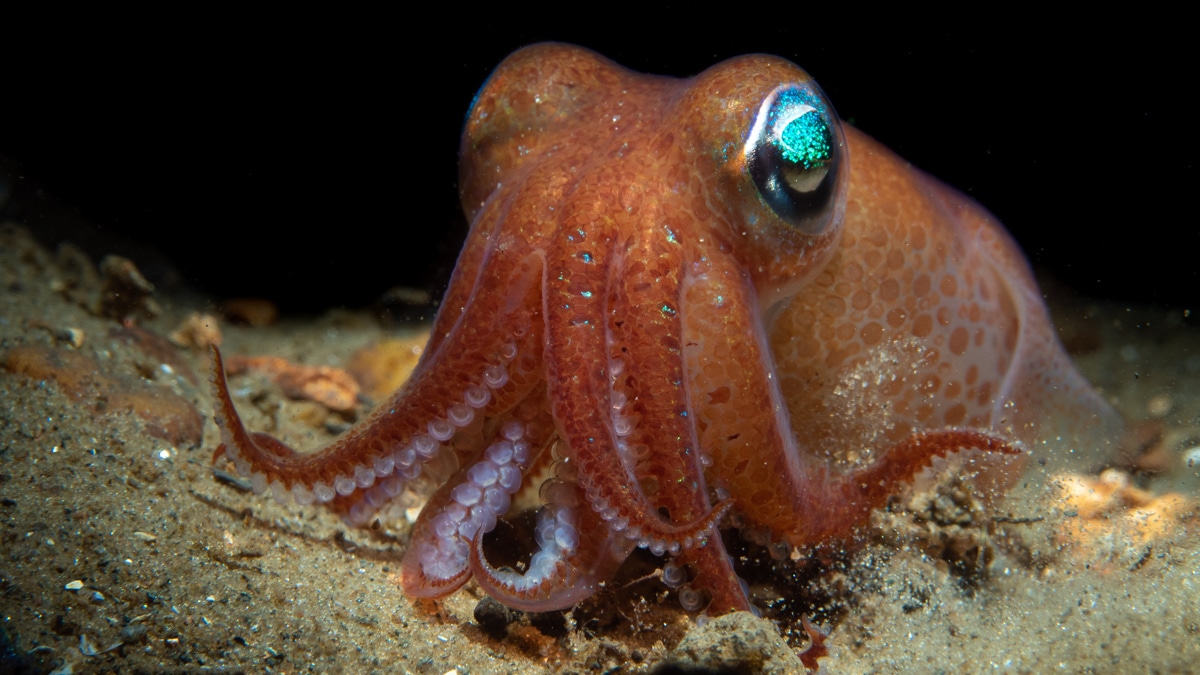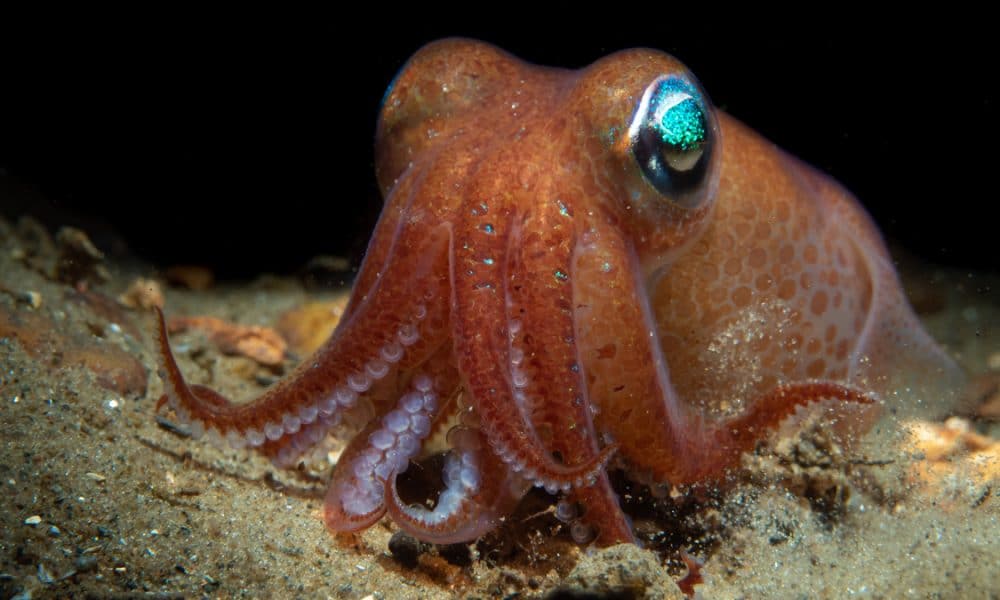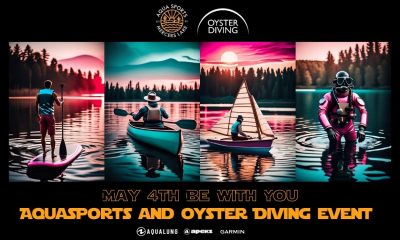Marine Life & Conservation Blogs
The underwater wonders of the UK’s seas, a story in photographs

 From the Jurassic Coast of Dorset to the northernmost waters of Scotland, there is a huge array of incredible landscapes and animals beneath the water’s surface in the UK. The Marine Conservation Society has gathered together some of the amazing ocean imagery capturing the wonders of UK seas by talented photographers and divers around the country.
From the Jurassic Coast of Dorset to the northernmost waters of Scotland, there is a huge array of incredible landscapes and animals beneath the water’s surface in the UK. The Marine Conservation Society has gathered together some of the amazing ocean imagery capturing the wonders of UK seas by talented photographers and divers around the country.
Read the photographers’ stories behind the captivating images, enjoy some unexpected sightings and get inspired to head to the UK’s coasts and seas as lockdown eases and summer draws closer.
The Marine Conservation Society’s sightings programme asks beachgoers to report animals including jellyfish, turtles and basking sharks when they spot them in UK waters. Divers can join Seasearch, a volunteer diving programme that monitors underwater life, with the opportunity to hone underwater photography skills.
Creatures of the deep
Sea hare, Swanage Pier, Dorset, UK, June 2020
The story: Sea hares look brown and sluggish at first glance but if you look closely they have delicate patterns and colours. I used a snooted spotlight effect to show this off and highlight the head tentacles which resemble a hare’s ears, giving this animal its common name.
Fluorescent fireworks anemone, Inveraray, Loch Fyne, July 2020.
The story: Over recent years underwater fluorescence photography has become a passion of mine, particularly in British waters. I never know quite what I’m going to find that will fluoresce under the blue (near UV) light. After spending the day diving at the Garvellachs my buddy and I decided to stop off for an evening dive in Loch Fyne. The site we decided on was at Inveraray slip which is fantastic for fireworks anemones. This particularly large individual was a favourite of mine from this dive as I was able to capture the whole anemone with its long tentacles stretched out within frame.
Flabellina pedata nudibranch, Swanage pier, England, 14 July 2020.
The story: The colours of this nudibranch make it not only one of our most flamboyant, but also easiest to spot! In a dark area under the pier this individual was making its way along a stalk of kelp. A flash of pink and purple in my torch light caught my eye, and so I had the pleasure of observing it for several minutes before I moved on.
Tompot blenny, Babbacombe Beach, Torquay, Devon, UK, June 2020.
The story: This tompot blenny is presenting a smiley face to the camera but he’s actually carefully guarding a stash of eggs in the crack behind him. Male tompots can be quite feisty in guarding their territory, which they keep clean and tidy, ready for several females to lay eggs in, if they’re lucky. They will fertilise the eggs and guard them for around a month in the early Summer.
Forests of the sea
Grey seals in surge, taken at Eilean Cluimhrig, Loch Eriboll, Scotland, UK
The story: The Grey seals on the North coast of Scotland are not as accustomed to divers as in some UK locations, but it was fun to watch them enjoying themselves at a distance. They were far more comfortable in the surging waves than I was, as I clung on to kelp to capture this photo.
Young Lumpsucker, Kinlochbervie, Sutherland, Scotland. 4th November 2020
The story: This young lumpsucker was about the size of a tennis ball and was living attached to the blades of sugar kelp. My buddy Kirsty Andrews found this one and I photographed it with one of my flashes backlighting the kelp to reveal its golden colour. As always with great finds, it was at the end of a long and chilly November dive, so I only had time for a few pictures before I had to bid it goodbye. I like the featherstar arms peeking
Spiny starfish (Marthasterias glacialis), Wembury, Devon, 4th June 2020.
The story: This starfish slowly walking up to the top of the kelp canopy was seeking a good vantage point from where it could release its spawn. A chemical sent out by females with their eggs prompts neighbouring starfish to join the party.
Brown crab in amongst dense animal turf, Falls of Lora, Loch Etive. 15th August 2020.
The story: Situated at the narrow entrance to Loch Etive, near Oban, the Falls of Lora has a reputation of being a bit of a scary dive. Given that the tide races through creating upwells, whirlpools, and standing waves, it’s easy to understand why. But done at the right time it is an excellent site and easily a favourite shore dive of mine. There is such amazing underwater topography and proliferation of life at this site, there was plenty to admire and photograph. While swimming along one of the gullies this crab caught my eye as it seemed to be comfortably nestled into the yellow breadcrumb sponge and hydroids surrounding it.
Into the blue
Blue Shark. Penzance, Cornwall, England. 29th September 2020
The story: I’d only seen blue sharks in British waters once before, so was delighted to get the chance on a sunny late-September day in 2020. After a few hours waiting the sharks started arriving, as their numbers built up they became more confident and rewarded me and my buddy with plenty of close passes. This frame of a beautiful female slicing through the autumnal sun was a favourite and stands out because of the blobs of atmospheric lens flare. Blue sharks are sadly the world’s most fished shark, so it was a real treat to see them.
Bib or pouting (Trisopterus luscus), Jurassic Coast, Dorset.
The story: Photographing these large shoals can be a challenge as the fish are highly reflective and change direction constantly. One summer I was drifting through crystal clear waters over an area of huge boulders off the Jurassic Coast in Dorset. The boulder tops were covered with red seaweeds, sponges and antenna hydroids. Suddenly I was joined by this small shoal of bib which swam alongside and just in front of me for several minutes. They would often bunch together nicely, allowing me to snap away as we floated along in the gentle current. It’s wonderful, relaxing dives like this that give you fond memories of British diving and keep you coming back for more.
Basking shark, Isle of Coll, July 2020.
The story: I’ve been over to the Island regularly in the last few years to photograph this huge fish as it migrates up the west coast of Scotland. I wanted to do something different from the classic head-on open mouth shot so I had a custom bit of photography gear built to try and take split shots – something that was rarely seen. It was 2 years in the planning and a real technical challenge due to the dark, plankton rich waters but I had a glorious week on the island with multiple dreamy encounters. This shot was taken on the last night, just as the sun was setting.
Atlantic Puffin, Fair Isle, Shetland.
The story: When photographing an animal, eye contact is a critical component, allowing your viewer to connect with the image. This image breaks many of the traditional rules. The setting sun, the uneasy pose of the puffin and scene all throw up many questions and thoughts. Where is the puffin looking? What is it thinking? What lies beyond the horizon?
For more information about the Marine Conservation Society visit their website by clicking here.
Title image: Mark Kirkland
Marine Life & Conservation Blogs
Creature Feature: Dusky Shark

 In this series, the Shark Trust will be sharing amazing facts about different species of sharks and what you can do to help protect them.
In this series, the Shark Trust will be sharing amazing facts about different species of sharks and what you can do to help protect them.
This month we’re taking a look at the Dusky Shark, a highly migratory species with a particularly slow growth rate and late age at maturity.
Dusky sharks are one of the largest species within the Carcharhinus genus, generally measuring 3 metres total length but able to reach up to 4.2 metres. They are grey to grey-brown on their dorsal side and their fins usually have dusky margins, with the darkest tips on the caudal fin.
Dusky Sharks can often be confused with other species of the Carcharhinus genus, particularly the Galapagos Shark (Carcharhinus galapagensis). They have very similar external morphology, so it can be easier to ID to species level by taking location into account as the two species occupy very different ecological niches – Galapagos Sharks prefer offshore seamounts and islets, whilst duskies prefer continental margins.
Hybridisation:
A 2019 study found that Dusky Sharks are hybridising with Galapagos Sharks on the Eastern Tropical Pacific (Pazmiño et al., 2019). Hybridisation is when an animal breeds with an individual of another species to produce offspring (a hybrid). Hybrids are often infertile, but this study found that the hybrids were able to produce second generation hybrids!
Long distance swimmers:
Dusky sharks are highly mobile species, undertaking long migrations to stay in warm waters throughout the winter. In the Northern Hemisphere, they head towards the poles in the summer and return southwards towards the equator in winter. The longest distance recorded was 2000 nautical miles!
Very slow to mature and reproduce:
The Dusky Shark are both targeted and caught as bycatch globally. We already know that elasmobranchs are inherently slow reproducers which means that they are heavily impacted by overfishing; it takes them so long to recover that they cannot keep up with the rate at which they are being fished. Dusky Sharks are particularly slow to reproduce – females are only ready to start breeding at roughly 20 years old, their gestation periods can last up to 22 months, and they only give birth every two to three years. This makes duskies one of the most vulnerable of all shark species.
The Dusky Shark is now listed on Appendix II of the Convention on the Conservation of Migratory Species (CMS), but further action is required to protect this important species.
Scientific Name: Carcharhinus obscurus
Family: Carcharhinidae
Maximum Size: 420cm (Total Length)
Diet: Bony fishes, cephalopods, can also eat crustaceans, and small sharks, skates and rays
Distribution: Patchy distribution in tropical and warm temperate seas; Atlantic, Indo-Pacific and Mediterranean.
Habitat: Ranges from inshore waters out to the edge of the continental shelf.
Conservation status: Endangered.
For more great shark information and conservation visit the Shark Trust Website
Images: Andy Murch
Diana A. Pazmiño, Lynne van Herderden, Colin A. Simpfendorfer, Claudia Junge, Stephen C. Donnellan, E. Mauricio Hoyos-Padilla, Clinton A.J. Duffy, Charlie Huveneers, Bronwyn M. Gillanders, Paul A. Butcher, Gregory E. Maes. (2019). Introgressive hybridisation between two widespread sharks in the east Pacific region, Molecular Phylogenetics and Evolution 136(119-127), https://doi.org/10.1016/j.ympev.2019.04.013.
Marine Life & Conservation Blogs
Creature Feature: Undulate Ray

 In this series, the Shark Trust will be sharing amazing facts about different species of sharks and what you can do to help protect them.
In this series, the Shark Trust will be sharing amazing facts about different species of sharks and what you can do to help protect them.
This month we’re looking at the Undulate Ray. Easily identified by its beautiful, ornate pattern, the Undulate Ray gets its name from the undulating patterns of lines and spots on its dorsal side.
This skate is usually found on sandy or muddy sea floors, down to about 200 m deep, although it is more commonly found shallower. They can grow up to 90 cm total length. Depending on the size of the individual, their diet can range from shrimps to crabs.
Although sometimes called the Undulate Ray, this is actually a species of skate, meaning that, as all true skates do, they lay eggs. The eggs are contained in keratin eggcases – the same material that our hair and nails are made up of! These eggcases are also commonly called mermaid’s purses and can be found washed up on beaches all around the UK. If you find one, be sure to take a picture and upload your find to the Great Eggcase Hunt – the Shark Trust’s flagship citizen science project.
It is worth noting that on the south coasts, these eggcases can be confused with those of the Spotted Ray, especially as they look very similar and the ranges overlap, so we sometimes informally refer to them as ‘Spundulates’.
Scientific Name: Raja undulata
Family: Rajidae
Maximum Size: 90cm (total length)
Diet: shrimps and crabs
Distribution: found around the eastern Atlantic and in the Mediterranean Sea.
Habitat: shelf waters down to 200m deep.
Conservation Status : As a commercially exploited species, the Undulate Ray is a recovering species in some areas. The good thing is that they have some of the most comprehensive management measures of almost any elasmobranch species, with both minimum and maximum landing sizes as well as a closed season. Additionally, targeting is entirely prohibited in some areas. They are also often caught as bycatch in various fisheries – in some areas they can be landed whilst in others they must be discarded.
IUCN Red List Status: Endangered
For more great shark information and conservation visit the Shark Trust Website
Image Credits: Banner – Sheila Openshaw; Illustration – Marc Dando
-

 News3 months ago
News3 months agoHone your underwater photography skills with Alphamarine Photography at Red Sea Diving Safari in March
-

 News2 months ago
News2 months agoCapturing Critters in Lembeh Underwater Photography Workshop 2024: Event Roundup
-

 Marine Life & Conservation Blogs2 months ago
Marine Life & Conservation Blogs2 months agoCreature Feature: Swell Sharks
-

 Blogs2 months ago
Blogs2 months agoMurex Resorts: Passport to Paradise!
-

 Blogs2 months ago
Blogs2 months agoDiver Discovering Whale Skeletons Beneath Ice Judged World’s Best Underwater Photograph
-

 Gear News3 months ago
Gear News3 months agoBare X-Mission Drysuit: Ideal for Both Technical and Recreational Divers
-

 Gear Reviews2 months ago
Gear Reviews2 months agoGear Review: Oceanic+ Dive Housing for iPhone
-

 Marine Life & Conservation2 months ago
Marine Life & Conservation2 months agoSave the Manatee Club launches brand new webcams at Silver Springs State Park, Florida


















































